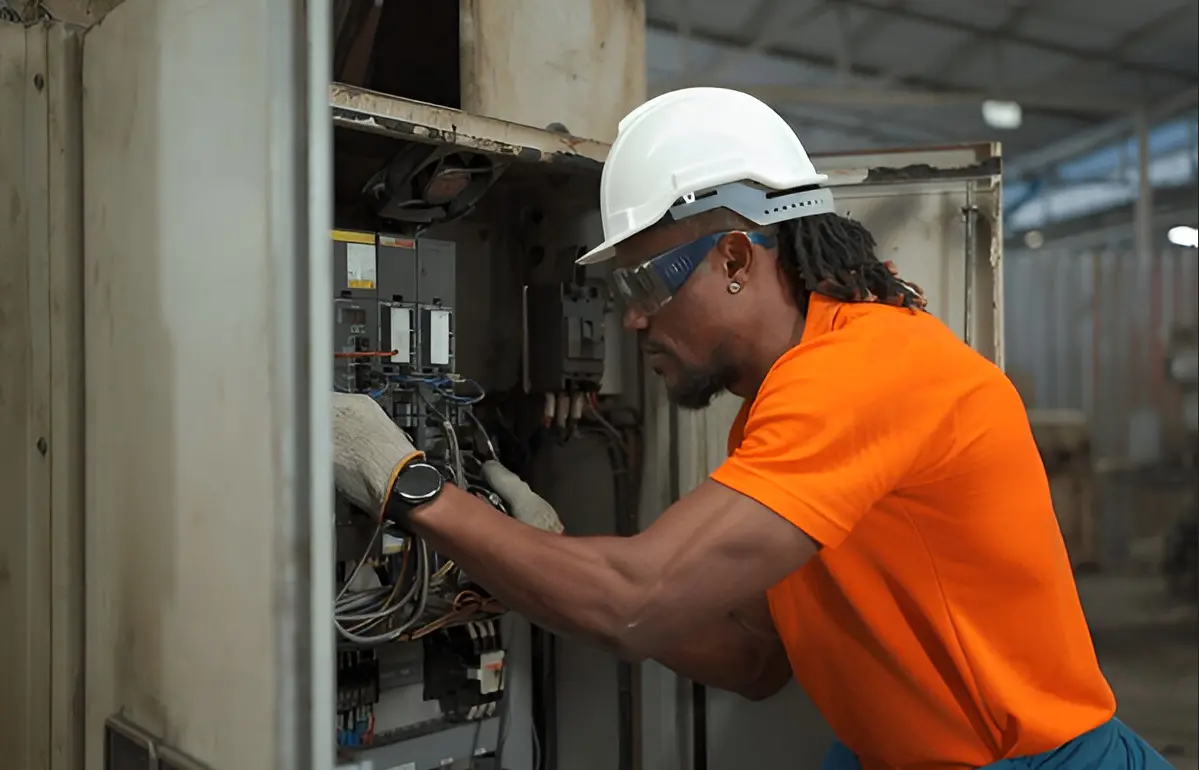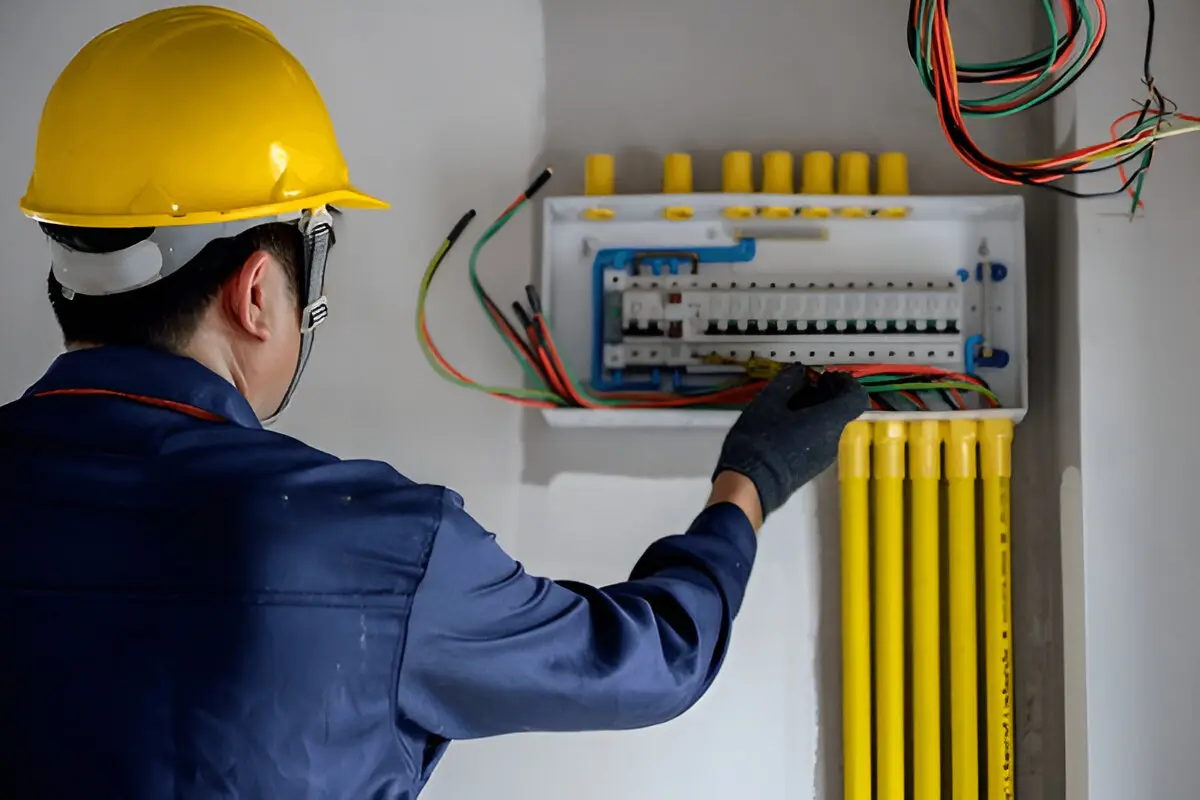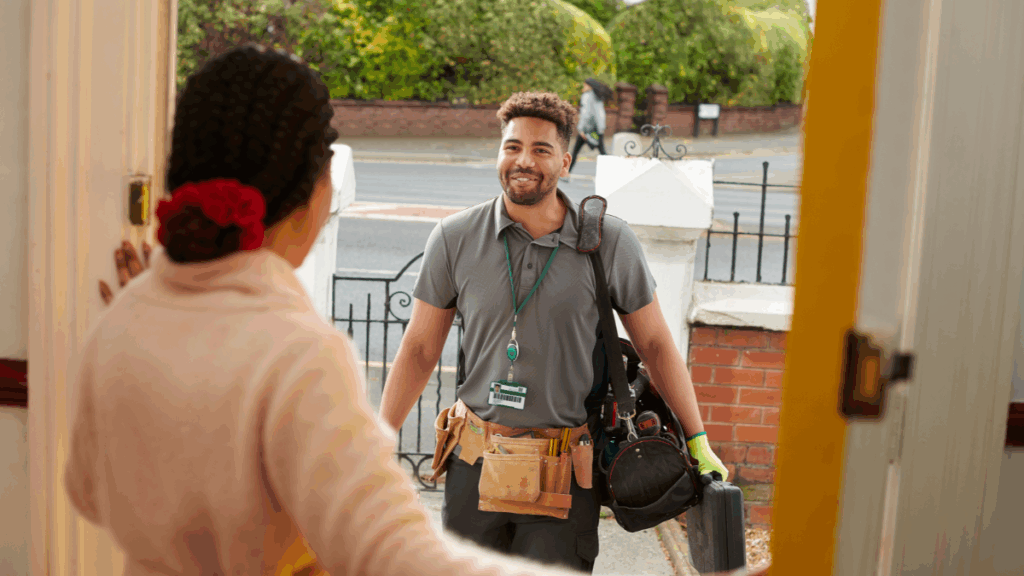Have you ever plugged in an electrical appliance, only to find the outlet is not working? It is a common scenario that causes inconveniences for homeowners. A damaged or dead outlet stops powering your devices and appliances. It prevents them from working properly. This can be incredibly frustrating and makes it a necessity to know how to fix outlets in your home. This is where this article enters the picture.
In this guide, we walk you through the process of troubleshooting electrical outlets. You will learn about common issues that lead to problem outlets. You will also find a step-by-step guide on troubleshooting a home’s electrical system.
As a precaution, remember that working with electricity can be risky. It can cause electrical panels to catch fire. If unsure about anything, it’s best to call a professional and minimize the risk of accidents.
That said, here is your guide to troubleshooting electrical outlets.
Common Problems with Electrical Outlets
Your home’s electrical system can experience a wide variety of outlet-related problems. For example, tripped circuit breakers and loose wires are fairly common electrical problems that every household faces. Wires can come loose or get disconnected, which also causes problems. Blown fuses are another common household electrical issue. You can read about these faults and more in greater detail below:
Circuit breakers protect your home from electrical surges. These are crucial safety components that stop the flow of electricity if the electrical current reaches dangerously high levels. If an outlet suddenly stops working, the first step is to check the breaker box.
How to Identify and Reset a Tripped Breaker
Open the breaker box and look for switches that are in the “off” position. You may also find some breaker switches stuck between the “on” and “off” states. Flip them towards the off position completely, then flip them again to turn them back on.
Signs of a damaged breaker
If your circuit breakers keep tripping despite an acceptable electrical load, it may hint at a damaged breaker. You can also identify damaged breakers by looking at some physical signs. The switch may feel loose or unusually stiff, making it difficult to reset the breaker. If you see burn marks or discoloration, it can be another sign of electrical damage.
GFCIs (Ground Fault Circuit Interrupters) are safety devices that shut off power in cases of electrical faults. These outlets are installed in moisture-prone areas. These outlets are fitted close to plumbing fixtures or moisture sources, like kitchens and bathrooms. They prevent electric shock hazards in wet environments.
If you find your GFCI outlet to be faulty, try resetting it by pressing the “Reset” button. If the outlet clicks and power is restored, the problem is resolved. If the outlet hasn’t reset, try the following:
What to Do if GFCI Outlet Won’t Reset
Check for other tripped GFCI outlets in the same circuit. If you find one, test it with a multimeter. If it still doesn’t work, it may be time to consider replacing the outlet. In such cases, we recommend calling licensed electricians.
Half-hot outlets have two receptacles that let you plug in two devices simultaneously. One receptacle is always powered, while the other one is partially controlled by a wall switch. You can test a half-hot outlet by following some simple steps. First, plug a lamp into both receptacles. If one works and the other doesn’t check the wall switch. If this works but the outlet doesn’t, you may have a wiring issue.
Loose wires can cause your outlets to lose power. It is one of the most common reasons behind power failures in households. If you find one outlet is supplying power inconsistently to others, it’s likely due to loose or disconnected wires.
How to Test and Secure Loose Connections
You should take precautions before testing for loose connections. Unplug all devices from the outlet and turn off the power at the breaker box. Remove the outlet cover and check the wiring to see if they’re properly connected. If not, tighten any loose screws or wires using a screwdriver.
Burned-out outlets are a serious fire hazard that can lead to disastrous accidents. As such, you should replace such outlets immediately. You can identify these outlets by observing the following:
-
Signs of a Burned-Out Outlet
- Black marks around the outlet.
- Melted plastic.
- A burnt smell coming from the device.

Over time and use, outlet receptacles wear out. The interior components deteriorate, and connections become loose. This can lead to sparks, overheating, and malfunctions. As a result, aged receptacles can cause safety concerns and should be replaced. This means you should identify an aged outlet and replace it immediately.
How to Identify an Aged Outlet
If a plug does not stay in place and falls out easily, it could be because the outlet has aged significantly. You can also identify such outlets by checking for visible cracks or discoloration.
Why Loose Plugs Are Dangerous
Loose connections increase the risk of sparks and fire. They also cause inconsistent power flow and damage your devices. This makes them dangerous for both safety and your electronics.
If your home has an older electrical system, you might experience blown fuses instead of tripped breakers. As such, you should check the fuses and replace them if necessary.
How to Check and Replace a Fuse
Turn off the main power. Open the fuse box and check if any have been blown out. If you find such fuses, remove and replace them with one of the same rating.
Signs of Deeper Electrical Problems
If your fuses keep blowing frequently, it might indicate your circuits are overloaded. This is a much deeper electrical problem for households. As such, keep an eye out for burn marks on fuse holders. If there is any exposed wiring, don’t risk touching it. Instead, call an electrician for professional help.
Sometimes, the device itself can be problematic, and not the outlet. But how can you identify where exactly the problem lies? Try the following:
How to Tell the Difference Between Device and Outlet Issue
Plug another device into the same outlet. If it works, you will know the original device is faulty. If not, the outlet may have problems and need repairs.
Step-by-Step Guide to Troubleshooting Electrical Outlets
If you are confident about troubleshooting electrical outlets by yourself, this section will be of help. Here is a step-by-step guide on how you can work on damaged or dead electrical outlets in your home:
Step 1: Turn Off the Power at the Breaker Box
Always start by cutting the power at the breaker box. This will protect you and your home from electrical shocks and accidents.
Step 2: Check the Circuit Breaker
Check to see if there are any tripped breakers. Reset them if possible. If not, you need to replace the damaged ones.
Step 3: Test the Outlet with a Multimeter
The third step involves testing out your outlet with a multimeter. You can check for voltage and current levels. If the outlet is without power, you can move on to the next step—inspecting the wires.
Step 4: Check for Loose or Damaged Wires
At this stage, you can check for loose or damaged wires in your outlets. To do this, remove the outlet cover. Carefully observe if any wires are loose and tighten them with a screwdriver. You should also inspect for damaged wires and call professionals to replace them if needed.
Step 5: Replace the Outlet If Necessary
If the outlet is burned or damaged beyond repair, the best thing would be to replace it. Get a new outlet and make sure it matches your home’s wiring type and amperage rating. If you need help with the installation process, call a licensed professional.
Step 6: Test the Outlet After Repair
After completing the repairs (or installation, in case of replacement), test your outlet. Restore power from the breaker box and plug in an appliance or device. If it works perfectly, then you can rest assured knowing the problem is fixed.
Step 7: If Still Not Working, Contact an Electrician
If the outlet still does not work properly or if you have complex wiring problems at your home, contact an electrician. They are licensed professionals who specialize in working on electrical problems. Qualified and expert electricians will be able to identify your problem and solve it with their expertise. This will ensure your electrical system performs flawlessly for years to come.
Safety Tips When Troubleshooting Electrical Outlets
You should follow some safety recommendations when troubleshooting electrical outlets. The following tips can help you work on outlets without risking injuries or accidents:
- Turn off the power before touching any wires.
- Use insulated tools to avoid shocks.
- Avoid working in damp or wet conditions.
- Never attempt to fix a burning or sparking outlet. In such cases, call an electrician immediately.
When to Call a Professional
How do you know if an issue is safe for you to handle by yourself? Well, there are some signs that can tell you if you should tackle a problem yourself or call licensed professionals. If you encounter any of these issues, contact a licensed electrician immediately:
- Burning smells or visible damage around the outlet.
- Frequent tripping of breakers without apparent cause.
- Blackened or melted plastic on outlets.
- Outdated or damaged wiring throughout the home.
FAQs
Why Is My Outlet Not Working but the Breaker Isn’t Tripped?
A loose wire, damaged outlet, or tripped GFCI outlet could be the cause. Test the outlet with a multimeter to confirm.
Can I Replace an Outlet Myself?
Yes, but only if you are comfortable with basic wiring. Always turn off the power at the breaker first to ensure safety.
What Are GFCI Outlets and How Do They Work?
These are safety devices that prevent shock by cutting off power when they detect ground faults. They are common in kitchens, bathrooms, and other areas with moisture sources.
How Much Does It Cost to Replace an Outlet?
The cost can vary based on several factors. For example, a DIY outlet replacement may be cheaper than hiring an electrician. Moreover, the costs of hiring professionals can also vary based on some factors. These include task complexity, labor, location, and urgency.
Conclusion
Knowing how to troubleshoot electrical outlets is an important and useful skill. You must always stay informed about the common outlet problems. Follow our step-by-step guide to identify and fix the issue. Resetting a tripped breaker and securing loose wires may be easy to handle. However, complex problems such as rewiring an electrical system and installing a new outlet are best left to capable hands. Follow safety tips if troubleshooting outlets yourself, and know when to call professionals. This will help ensure maximum performance for your electrical system. It will also keep you, your loved ones, and your home safe from electrical accidents.
Need expert help with electrical issues in New Orleans? Download the House Fly app! You can connect with the leading electricians in your area. Whether it is a simple repair or a major installation, they can help with it all. Simply select your preferred professional and check reviews and real-time pricing. Match availability and book away straight from the app!
Contact us for more information. Call us at 504-284-9208 or send us an email at help@housefly.com.

















